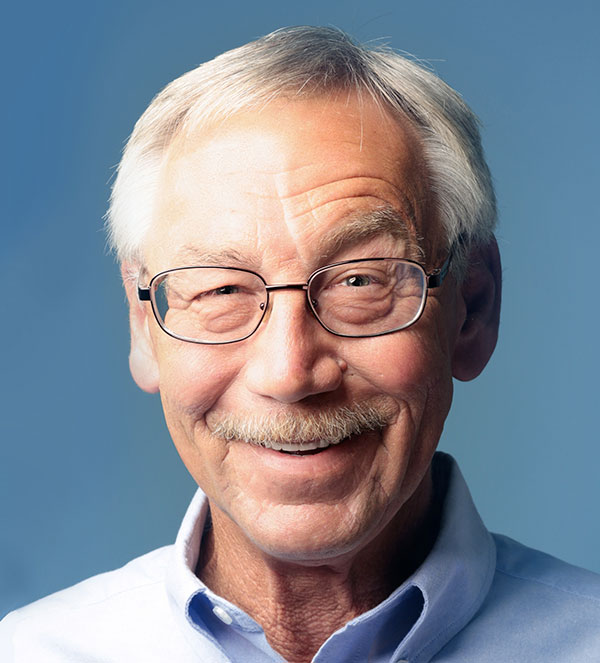Written by Chris Jones —
Fourteen months ago, Edward Lynch noticed a small bump that he describes as “the size of a mosquito bite” beneath his right nipple while enjoying time near the pool with his wife. After keeping an eye on the bump for a week-and-a-half, Lynch fell ill with what he believed to be a sinus infection.
“I was at work and I was coughing and sneezing,” Lynch remembers. “So I called my doctor and made an appointment.”
He was handed a prescription to treat the infection and asked his doctor to take a look at the bump beneath his nipple. He was told that it was likely fatty tissue, something common among men in their early 60s. Exercising precaution, his physician placed a call to a surgeon at TPMG’s Oyster Point clinic. Thirty minutes later, Lynch sat face-to-face with Dr. Danny Cantwell.
“He said that it felt like fatty tissue and said, ‘Lay down and we’ll cut it out,’” recalls Lynch. “After he started cutting, he said to me, ‘This doesn’t look typical.’ He stitched me up, sent me home and told me to come back in a week.”
Seven days later, on Aug. 28, 2012, Lynch met with Cantwell, who informed him that his tissue pathology couldn’t be tested locally, so he had it sent it to VCU Medical Center in Richmond, Va. The results weren’t what they had expected.
“He told me that I had sarcomatoid carcinoma of the breast, which is very rare and very aggressive,” says Lynch.
He was told that he would need a modified radical mastectomy and they scheduled it for Sept. 10. The surgery meant the removal of “all of the breast tissue and two lymph nodes,” says Lynch. Within a few hours of his diagnosis, fear set in. He began his journey by painting his own breast cancer ribbon—a blue and pink one. “My first feelings were of disbelief. I’ve never had anything wrong with me and I have no trail of cancer in my family,” he says.
His surgery took place at Mary Immaculate Hospital in Newport News, Va., and was a success. He bears an eight-inch scar where they cut a football-shaped chunk out of his chest. His oncologist, Dr. Kim Schlesinger, says that, “For a man, removing the breast is less important [than it is for a woman] and a mastectomy is generally the preferred approach.”
During his recovery period, Lynch rediscovered his faith and began reaching out to others. He came in contact with Beyond Boobs, a Hampton Roads-based breast cancer education organization and became a “boyber”—the male equivalent of a “boober,” which members of the organization playfully call themselves. His warm smile, gentle tone and inviting demeanor have won Lynch praise from the organization and his oncologist.
“Ed has a great attitude and it’s reflected in his approach to his diagnosis and in his life. He wants to understand what [the cancer] was, talk about the options and then [say]‘let’s do it’” says Schlesinger. “What I like about Ed is that he’s using his situation to help others.”
Ed recently cleared his six month, post-treatment screening and is doing well. He continues his active participation in the breast cancer support community and even sports a pink and blue ribbon on the tailgate of his pickup. “I’m going to do as much as I can and talk to as many people as I can to spread awareness,” says Lynch.
…
Fifty-eight miles southeast in Elizabeth City, N.C., Scott Fenwick, a 50-year-old design engineer with the North Carolina Department of Transportation notices a dimpling in his nipple. It’s 2008. After his family encourages him to go in for a wellness exam with his physician, he’s told that he needs a biopsy on the tissue.
It returns positive for breast cancer.
“I was stunned,” admits Fenwick. “I wanted to get it taken care of and I told them I wanted an aggressive treatment plan.” He got his wish and missed only a week of work during the process. Though the chemotherapy caused him to feel sick, he pressed on.
Father to a then 13-year-old son, Fenwick also took BRCA1 and BRCA2 tests to determine if he carried an inherited gene mutation. He tested negative. Since treatment, he’s seen three to four different doctors every three to four months.
Like Lynch, Fenwick found support with Beyond Boobs while dealing with cancer and was even included in their annual “A Calendar to Live By” 2010. An avid runner, the now 56-year-old Fenwick continues to support the cause by attending the yearly Pink Carpet Gala and through running an annual 10K charity race. “I do the Run for the Hills every year,” he says. “And I’ll run it again this year.”
Mary Beth Gibson, co-founder of the group, likes the dimension that male survivors add to the mostly female membership. Apart from the differing perspective and emotional response to diagnosis, the group’s inclusion of men shows the indiscriminate nature of the disease.
Says Gibson, “Having men come forward to share their experiences with breast cancer brings attention and awareness to the fact that it’s not a women’s only disease. It can affect anyone—even men.”



